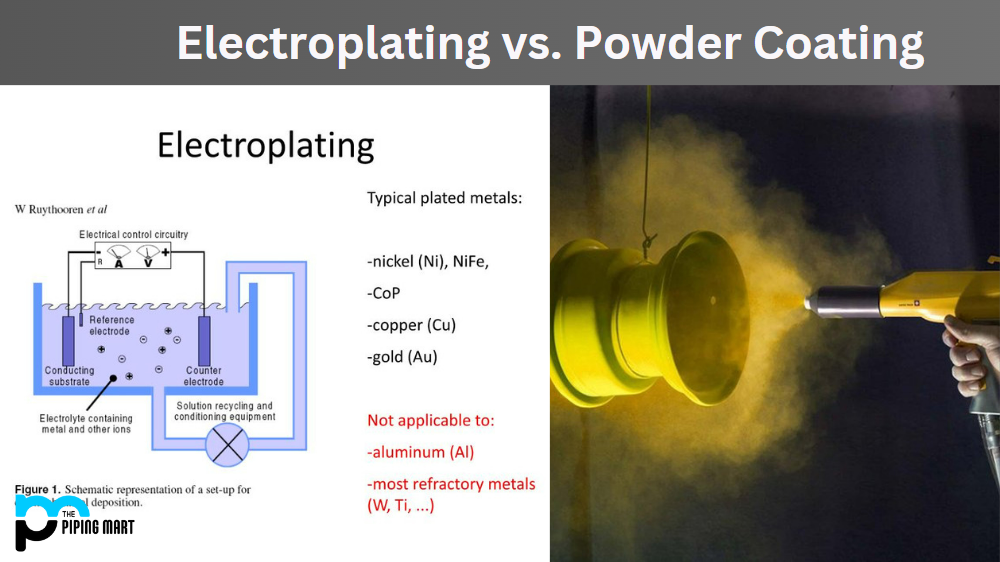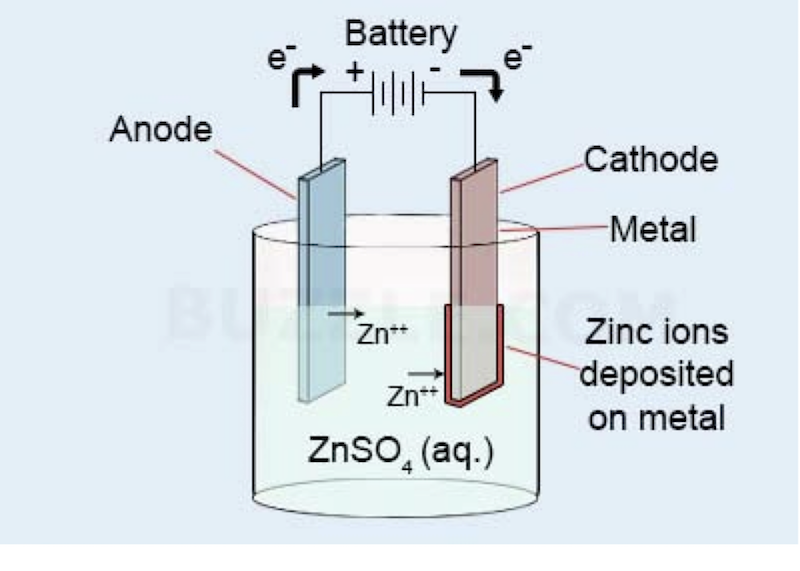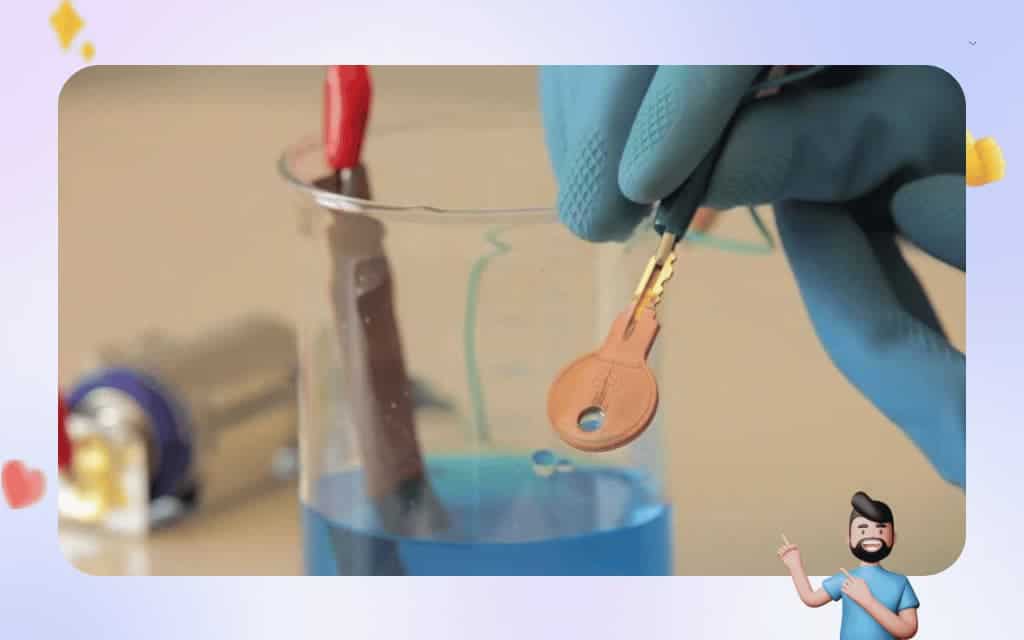Electroplating—sounds fancy, right? A process that gives your car parts, jewelry, or even bathroom fixtures that shiny, polished look we all love. But as with most things that glitter, electroplating has a less glamorous side. While it’s undeniably useful in many industries, it comes with a set of challenges that can’t be ignored.
If you’ve ever wondered why some metals look like they’re wearing a coat of armor or why some cheap trinkets seem deceptively expensive, the answer is electroplating. Electroplating is the process of coating a thin layer of metal onto a surface (usually another metal) by using an electric current.
The goal? To enhance appearance, prevent corrosion, improve wear resistance, or just make something look pricier than it really is (looking at you, fake gold jewelry).
Here’s a quick breakdown of how it works:
- Preparation: The object to be plated (the substrate) is thoroughly cleaned to remove dirt, grease, or rust.
- Electrolyte Bath: The substrate is immersed in a solution (called the electrolyte) that contains metal ions.
- Electrochemical Reaction: An electric current passes through the solution, causing the metal ions to adhere to the substrate.
- Finishing Touches: Once coated, the object is rinsed, polished, and ready to dazzle.
Why Is Electroplating So Popular?
From protecting industrial equipment to making delicate jewelry sparkle, electroplating is a go-to process in industries like:
- Automotive: Think of chrome-plated car parts.
- Electronics: Gold-plated connectors ensure efficient conductivity.
- Jewelry and Décor: Ever noticed how costume jewelry can look like the real deal? That’s electroplating magic.
It’s clear that electroplating has a lot going for it, but here’s the kicker: behind that polished exterior lies some serious drawbacks. Ready to dig into what the five disadvantages of electroplating are? Let’s start with the first big issue—its environmental impact.

Five Disadvantages of Electroplating Explained
1. Environmental Hazards and Toxic Waste
Let’s start with the elephant in the room—or rather, the toxic sludge in the factory. One of the biggest disadvantages of electroplating is the significant environmental hazards it poses. This process is far from eco-friendly, and here’s why:
Electroplating involves the use of chemicals like cyanide, chromium, nickel, and cadmium—names that sound more at home in a villain’s chemistry lab than in industrial manufacturing. These substances are not only harmful to the environment but also difficult to dispose of safely. For example, the wastewater generated from electroplating contains heavy metals that can contaminate soil and groundwater if not treated properly.
Did you know? According to a study by the U.S. Environmental Protection Agency (EPA), industries engaged in electroplating produce thousands of tons of hazardous sludge annually. This sludge is classified as toxic waste, meaning it requires specialized treatment and disposal methods to prevent ecological damage.
The Regulatory Nightmare
Governments worldwide have strict regulations for electroplating waste disposal. While these rules are critical for environmental protection, they can also be a headache for businesses. Companies must invest in advanced waste treatment systems, which adds to costs and complicates operations.
Case in Point:
A jewelry manufacturer in India was fined heavily for improper disposal of electroplating waste. The untreated chemicals had leaked into a nearby river, causing fish deaths and public health issues for residents in the area. The cleanup operation took months and cost the company millions.
In short, while electroplating gives your products a glossy finish, it leaves behind an ugly trail of toxic waste and environmental challenges.
2. High Costs of Equipment and Maintenance
Electroplating might look like magic, but it’s far from cheap. The second major drawback is the steep costs associated with setting up and maintaining electroplating systems.
Here’s the cost breakdown:
- Initial Setup: Electroplating requires specialized tanks, electrodes, power supplies, and monitoring systems. High-quality plating baths alone can cost tens of thousands of dollars.
- Ongoing Maintenance: The plating solution must be monitored and replaced regularly to maintain quality. Equipment like filtration systems and pumps also require frequent upkeep.
- Energy Consumption: Electroplating is an energy-hungry process. The electricity required to maintain the plating bath and generate the electric current significantly adds to operational expenses.
The Hidden Costs
Beyond the obvious expenses, there are hidden costs like staff training (you need skilled operators), compliance with safety and environmental laws, and unexpected equipment breakdowns.
A Fun Analogy:
Imagine electroplating as owning a sports car. It’s sleek and impressive, but between the gas mileage, maintenance, and insurance, it’ll leave a serious dent in your wallet.
Impact on Small Businesses
For smaller manufacturers, these costs can be a deal-breaker. While larger companies might absorb the expenses, small businesses often find electroplating economically unsustainable.
![[pdf] electrodeposition of nickel/copper multinanolayer by dual bath [pdf] electrodeposition of nickel/copper multinanolayer by dual bath](https://d3i71xaburhd42.cloudfront.net/0551b88b98f13fa978ea1e9e4062dd4d43d45c00/30-Table2.1-1.png)
3. Limited Adhesion and Potential for Peeling
One of the most frustrating disadvantages of electroplating is the risk of poor adhesion, which can cause the plated layer to peel, flake, or bubble over time. For industries that rely on electroplating for durability and aesthetics, this can be a serious problem.
Here’s the science behind it: For electroplating to work well, the surface of the substrate needs to be meticulously clean and properly prepared. Any contamination—be it oil, dirt, or even microscopic particles—can prevent the metal layer from bonding effectively. Over time, this weak bond can lead to peeling, which compromises the quality of the finished product.
What Causes Peeling?
Peeling often results from several factors, including:
- Poor Surface Preparation: If the substrate isn’t cleaned or treated correctly, adhesion suffers.
- Incorrect Plating Parameters: Things like improper voltage, pH levels, or temperature during the plating process can cause defects.
- Material Mismatch: Certain metals simply don’t bond well, leading to a higher risk of failure.
Real-World Impacts
Think about chrome-plated car parts or gold-plated jewelry. If the plating starts to peel or flake, it not only looks bad but also exposes the underlying metal to corrosion. For consumers, this can feel like buying a new gadget only for it to fall apart within weeks.
Industry Woes
For manufacturers, peeling plating can lead to high rejection rates, warranty claims, and even damaged reputations. In critical applications like medical devices or aerospace components, poor adhesion could have far more serious consequences, potentially leading to product failures or safety hazards.
How to Mitigate This Issue
- Invest in Proper Cleaning Processes: Ultrasonic cleaning and acid dips are common techniques for removing surface contaminants.
- Optimize Plating Parameters: Regularly calibrate equipment and monitor bath conditions to maintain consistency.
- Use Adhesion Promoters: Certain chemical treatments can improve the bond between the substrate and plating layer.
Bottom Line: Peeling may sound trivial, but in industries where quality is paramount, it’s a disadvantage that can’t be ignored.
4. Non-Uniform Coating
Imagine trying to paint an object with lots of nooks, crannies, and uneven surfaces—it’s hard to get consistent coverage, right? The same challenge exists in electroplating. A non-uniform coating is a common disadvantage, particularly for objects with complex geometries.
Why Does This Happen?
Electroplating relies on the flow of electric current, which tends to concentrate on high points or edges of the substrate. This leads to thicker plating in those areas, while recessed or hard-to-reach spots may receive little to no coating.
The Consequences of Uneven Coating
- Corrosion Risks: Thinly plated areas are more prone to rust and wear, defeating the purpose of electroplating in the first place.
- Aesthetic Issues: Uneven coatings can result in visible imperfections, which is a dealbreaker for products where appearance matters.
- Functionality Problems: In applications requiring precision, such as electronics or medical tools, inconsistent plating thickness can impact performance.
Example:
Consider a gold-plated circuit board. If the coating isn’t uniform, it could lead to poor conductivity in certain areas, potentially causing device failures.
Solutions to Improve Uniformity
- Use Auxiliary Anodes: These help distribute the electric current more evenly across the surface.
- Rotate the Substrate: Rotating the object during plating can ensure better coverage.
- Improve Bath Chemistry: Adjusting the plating solution and additives can reduce uneven deposition.
While non-uniform coating isn’t always catastrophic, it’s a significant drawback in industries where reliability and aesthetics are non-negotiable.
5. Health and Safety Risks
Last but definitely not least, let’s talk about the health risks of electroplating, both for workers and the surrounding environment. Electroplating requires handling hazardous chemicals and exposure to potentially dangerous fumes, making it one of the riskiest manufacturing processes.
Health Risks to Workers
- Chemical Exposure: Workers often deal with toxic substances like chromium and cadmium, which are known carcinogens. Prolonged exposure can lead to severe health issues, including respiratory problems, skin irritation, and even organ damage.
- Fume Inhalation: The process releases harmful gases that, if inhaled regularly, can lead to long-term health problems.
Accidents Happen
Spills, splashes, and improper handling of chemicals can result in serious injuries. Even with safety protocols, the risks remain high, especially in facilities that cut corners on training or equipment.
The Cost of Safety
To mitigate these risks, companies must invest in:
- Ventilation Systems: To reduce exposure to toxic fumes.
- Protective Equipment: Gloves, masks, and goggles are non-negotiables.
- Training Programs: Workers need to understand how to handle materials safely.
Fun Fact (or Not So Fun):
In 2022, an electroplating factory in Southeast Asia faced a mass worker strike after reports of unsafe conditions led to several hospitalizations. The company had to shut down operations for months to overhaul safety protocols.
For manufacturers, neglecting health and safety isn’t just dangerous—it’s expensive. Penalties, lawsuits, and reputational damage can quickly add up, making this a disadvantage no business can afford to overlook.

Other Challenges Associated with Electroplating
Beyond the five major disadvantages we’ve covered, there are several additional challenges that industries face when it comes to electroplating. These might not make the headlines, but they can still cause headaches for manufacturers and end-users alike.
1. Time-Intensive Process
Electroplating isn’t exactly known for its speed. Achieving the desired thickness or finish can take hours or even days, depending on the complexity of the object and the metal being used. For manufacturers working on tight production schedules, this can create significant bottlenecks.
- Example: A factory producing automotive parts may need to electroplate thousands of components. If each batch takes hours, delays can cascade down the production line, leading to missed deadlines and frustrated clients.
- Fun Fact: To save time, some manufacturers try to speed up the process by increasing the electric current. But this often results in poor-quality plating—think uneven surfaces or brittleness.
2. Material Limitations
Not all materials are suitable for electroplating. For instance, certain plastics or composites require extensive pre-treatment to even hold a plated layer. Even with metals, some combinations don’t bond well, limiting the options for manufacturers.
Quick List of Materials That Are Tricky to Plate:
- Plastics: Require an intermediate conductive layer, which adds complexity.
- Aluminum: Needs special pre-treatment because it forms a natural oxide layer that can interfere with adhesion.
- Non-Metallic Materials: Wood, ceramics, and other non-conductive surfaces are generally off the table unless they’re pre-coated with conductive paint or other treatments.
This limitation means industries must often compromise on design or material selection, which can stifle innovation.
3. Technical Expertise Required
Electroplating isn’t a set-it-and-forget-it kind of process. It demands skilled operators who understand the nuances of chemistry, electrical engineering, and quality control.
Why Does This Matter?
- Training Costs: Companies must invest heavily in training workers to handle the process effectively.
- Room for Error: Even small mistakes—like a slight imbalance in bath chemistry or incorrect voltage—can ruin an entire batch of products.
- Dependency on Specialists: If a key technician leaves, the entire operation could face disruptions while a replacement is trained.
4. Risk of Hydrogen Embrittlement
Here’s a technical issue you might not expect: electroplating can cause something called hydrogen embrittlement. During the process, hydrogen atoms can penetrate the metal substrate, making it brittle and prone to cracking.
- Industries Most Affected: Aerospace and automotive industries, where structural integrity is critical, are especially wary of this risk.
- Prevention Methods: Post-plating heat treatments can alleviate hydrogen embrittlement, but they add extra steps and costs.
While electroplating has undeniable benefits, these additional challenges only add to its complexity. From slowing down production to requiring specialized materials and expertise, the process demands a significant commitment in time, effort, and resources.
When you add these challenges to the major disadvantages we’ve already discussed, it’s clear that electroplating isn’t always the perfect solution it seems to be.